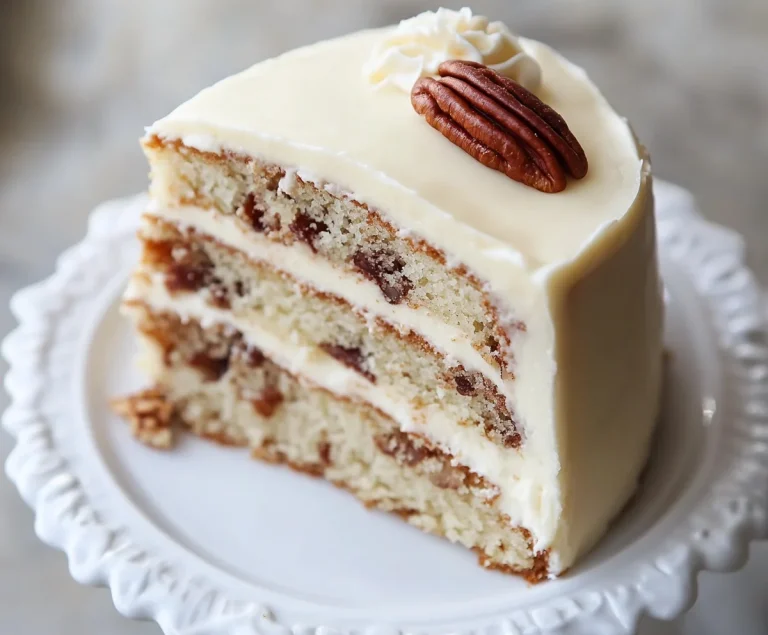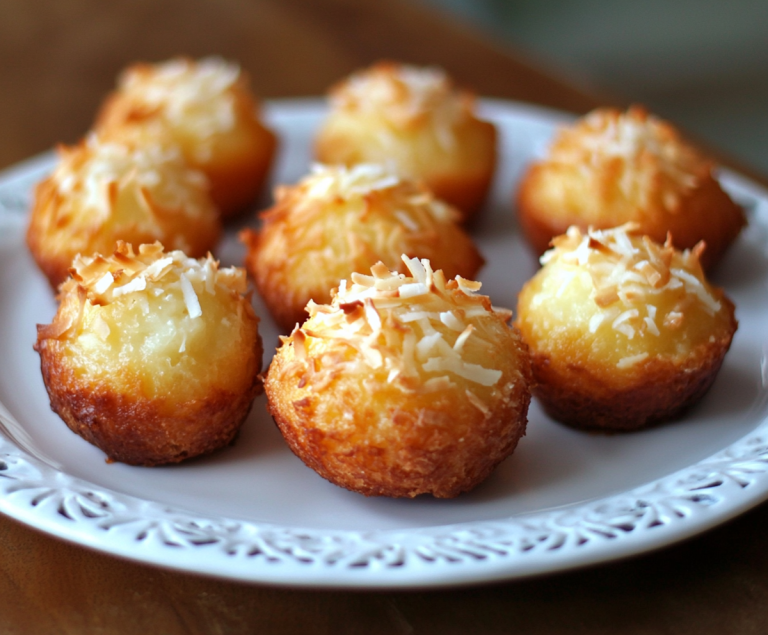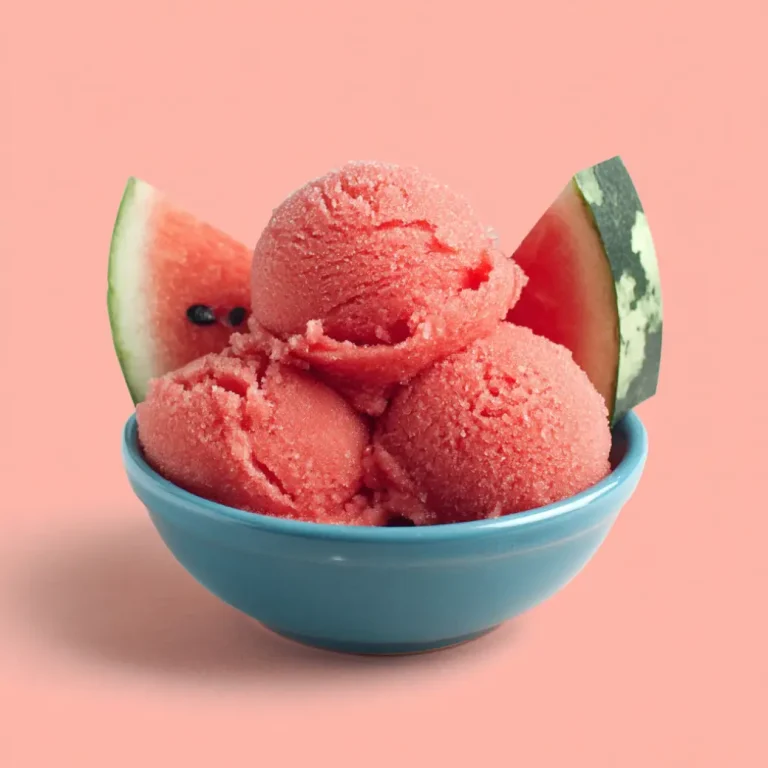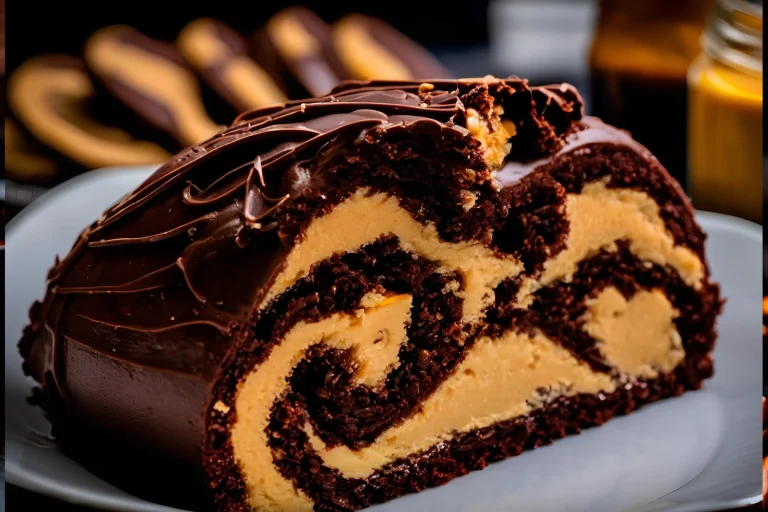Introduction
There is something truly special about a classic baked cheesecake. It is the kind of dessert that feels both indulgent and comforting at the same time. Add a splash of lemon to that equation, and you have a dessert that stands out for its freshness, elegance, and timeless appeal. Baked lemon cheesecake is the perfect blend of creamy richness and bright citrus flavor. The smooth texture of the cream cheese combined with the tart notes of lemon creates a balanced and unforgettable dessert. It is light enough to serve after a heavy meal, but rich enough to satisfy every sweet craving. Whether you are preparing this for a holiday gathering, a dinner party, or just a weekend treat, this baked lemon cheesecake will not disappoint.
What makes this dessert even more attractive is that it is not complicated to make. While it may look like something from a fancy bakery, it only requires a few basic ingredients and some patience. The result is a showstopping dessert that tastes as good as it looks. Plus, it can be made ahead of time and stored in the fridge until you are ready to serve. That makes it a great option when you want to impress guests without spending all day in the kitchen. In this article, you will find everything you need to know, including a full ingredients list with calorie breakdown, detailed step-by-step instructions, tips to make it your own, nutrition details, and serving ideas. Let’s get started.
Ingredients Needed
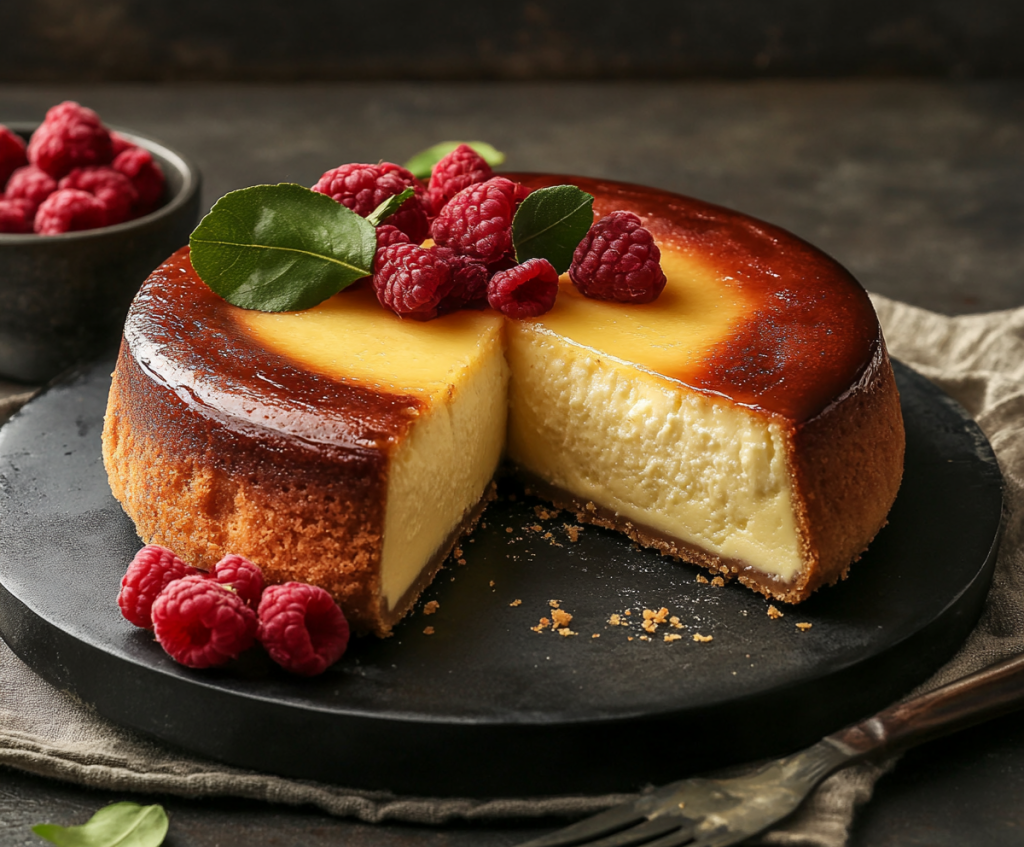
To make the perfect baked lemon cheesecake, you will need some pantry staples and a few fresh ingredients. The good news is that this recipe does not require any hard-to-find items. Each ingredient plays an important role in the flavor and texture of the final cheesecake. Below is a complete list along with a table that shows the calorie count for each component. This will help you plan your portions or adapt the recipe to meet your dietary goals.
Ingredients List
For the crust:
- Digestive biscuits or graham crackers, 200 grams
- Unsalted butter, melted, 100 grams
For the filling:
- Full-fat cream cheese, 500 grams
- Caster sugar, 150 grams
- Large eggs, 3
- Sour cream, 200 milliliters
- Lemon zest from 2 fresh lemons
- Fresh lemon juice, about 60 milliliters
- Vanilla extract, 1 teaspoon
- Cornflour or cornstarch (optional), 1 tablespoon
Calories Table
| Ingredient | Quantity | Calories (Approximate) |
|---|---|---|
| Digestive biscuits | 200 grams | 850 |
| Unsalted butter | 100 grams | 717 |
| Cream cheese | 500 grams | 1750 |
| Caster sugar | 150 grams | 600 |
| Eggs | 3 large | 210 |
| Sour cream | 200 milliliters | 410 |
| Lemon zest | From 2 lemons | 10 |
| Lemon juice | 60 milliliters | 15 |
| Vanilla extract | 1 teaspoon | 12 |
| Cornflour (optional) | 1 tablespoon | 30 |
Total calories for the entire cheesecake: Approximately 4600
Calories per slice (12 slices): Around 384
Step-by-Step Cooking Instructions
Start by preheating your oven to 160 degrees Celsius or 320 degrees Fahrenheit. This moderate temperature ensures the cheesecake bakes evenly without drying out or cracking. Begin by preparing the crust. Crush the digestive biscuits until they form fine crumbs. You can do this using a food processor or place them in a sealed bag and crush them with a rolling pin. Once crushed, transfer them to a bowl and mix with melted butter until well combined. The mixture should feel like damp sand and hold together when pressed.
Press the crumb mixture into the base of a 9-inch springform pan. Use the back of a spoon or the bottom of a glass to smooth and compact the base evenly. Bake the crust in the oven for ten minutes. This helps set the base and adds a slightly toasty flavor. After ten minutes, take the pan out and let it cool while you prepare the filling.
In a large mixing bowl, beat the cream cheese and sugar together until smooth and fluffy. Make sure your cream cheese is at room temperature before you start. This helps achieve a silky texture without lumps. Add the eggs one at a time, beating well after each addition. Then mix in the sour cream, lemon zest, lemon juice, and vanilla extract. If you want your cheesecake to be extra firm and less likely to crack, stir in a tablespoon of cornflour.
Once the filling is ready, pour it over the cooled crust and smooth the top with a spatula. Place the springform pan in a larger baking dish and fill the outer dish with hot water to create a water bath. This gentle baking method keeps the cheesecake moist and helps prevent cracks on the surface.
Bake the cheesecake for about 50 to 60 minutes. The edges should be set but the center should still have a slight wobble. Turn off the oven, leave the door slightly open, and let the cheesecake cool inside the oven for one hour. After that, transfer it to the countertop and let it come to room temperature. Then cover and refrigerate for at least four hours, or preferably overnight.
Tips for Customizing the Recipe
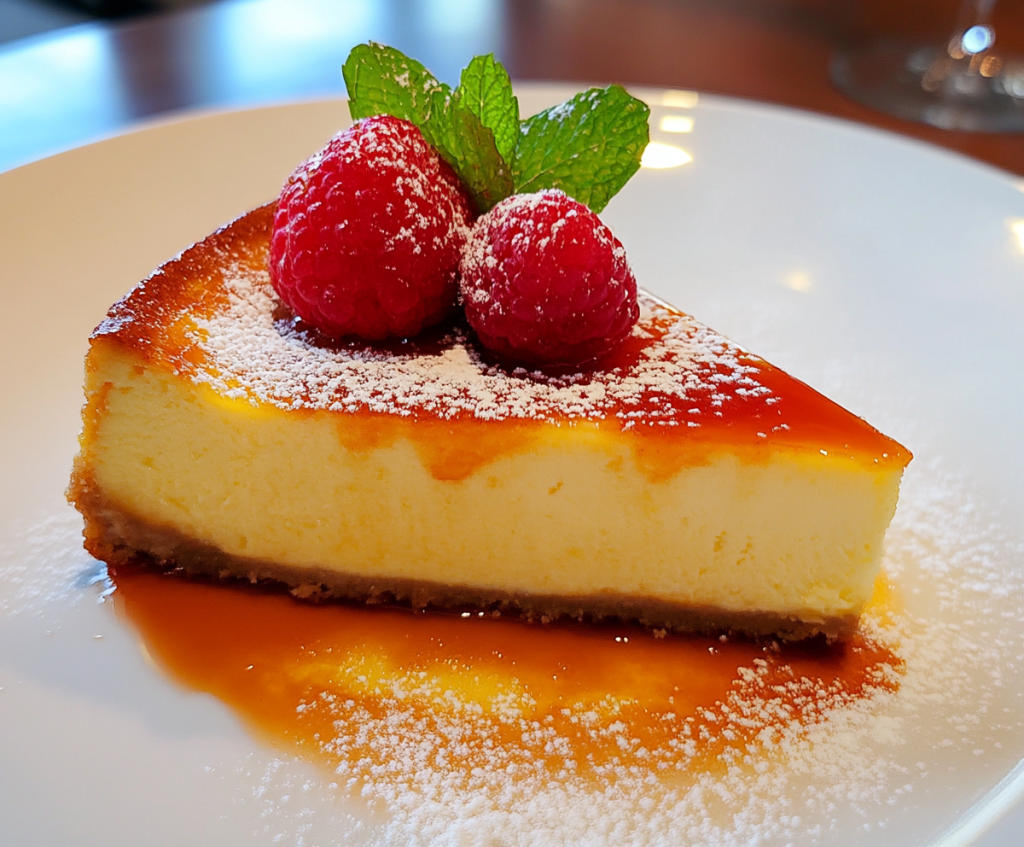
There are so many ways you can personalize this cheesecake. If you want to make a gluten-free version, just swap out the digestive biscuits for a gluten-free alternative. You can use almond flour or gluten-free graham crackers to make the crust. If you prefer a lower sugar option, replace the sugar with a natural sweetener like stevia or monk fruit. This will cut down on the calories without sacrificing much flavor.
For extra flavor, consider swirling in some raspberry puree or lemon curd into the filling before baking. This adds a beautiful marbled effect and more depth of flavor. You can also top the baked cheesecake with a glaze made of lemon juice and powdered sugar. Another idea is to fold in white chocolate chips or top the cheesecake with toasted coconut or crushed pistachios for added texture.
Nutritional Information

Each slice of this cheesecake contains roughly 384 calories. Most of the calories come from fat and sugar, which is typical for cheesecake. There are also about 7 grams of protein per slice, thanks to the cream cheese and eggs. The saturated fat content is fairly high due to the full-fat dairy, so portion control is key. Here is a basic breakdown per slice.
| Nutrient | Approximate Amount |
|---|---|
| Calories | 384 kcal |
| Total Fat | 29 grams |
| Saturated Fat | 17 grams |
| Carbohydrates | 24 grams |
| Sugar | 17 grams |
| Protein | 7 grams |
| Fiber | Less than 1 gram |
| Sodium | 180 milligrams |
Serving Suggestions
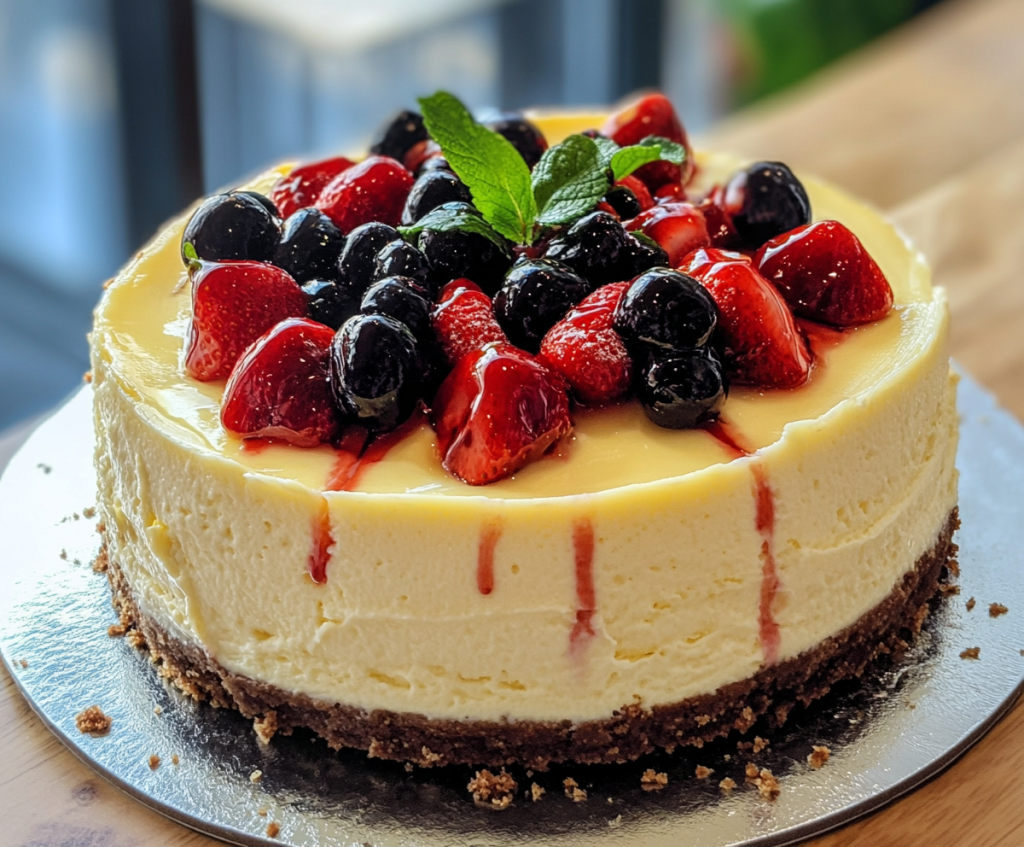
Serve your baked lemon cheesecake cold, straight from the fridge. It is rich, so small slices go a long way. For a classic presentation, add a dollop of whipped cream and a few fresh berries on top. Blueberries, raspberries, or sliced strawberries all pair beautifully with lemon. You can also drizzle some berry compote or lemon curd on top for extra elegance. If you want to keep things simple, just dust the top with powdered sugar and garnish with lemon zest curls. A cup of herbal tea or a glass of dessert wine makes a perfect companion.
Conclusion
A baked lemon cheesecake is more than just a dessert. It is a celebration of flavor and texture that brings comfort and joy in every bite. This recipe proves that you do not need fancy ingredients or complicated techniques to make something truly special. With its rich and creamy filling, refreshing lemon taste, and crisp buttery crust, this cheesecake is bound to become a favorite in your kitchen. You can follow it exactly or get creative and make it your own. Either way, you will be rewarded with a dessert that is as beautiful as it is delicious. Make it once and it will likely become a regular feature on your dessert table.


